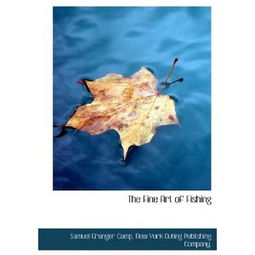
Content:
In the vast and mysterious world of freshwater fishing, encountering an eel fish, or "net fish" as it is sometimes called, can be both an exciting and challenging experience. Eels are known for their elusive nature and swift movements, making them a favorite among anglers looking for a real test of their skills. If you're lucky enough to meet an eel in your fishing endeavors, here are some essential techniques to help you master the art of catching this fascinating creature.
Understanding Eel Behavior
Before you can effectively catch an eel, it's crucial to understand their behavior. Eels are nocturnal creatures that prefer to stay in deep, dark waters. They are highly sensitive to vibrations and changes in water pressure, so a quiet approach is key. Additionally, eels are bottom feeders, meaning they search for food on the riverbed. Knowing this can help you position your bait and lures effectively.
Choosing the Right Equipment
To catch an eel, you'll need the right equipment. Here are some essential items:
- A strong rod: Eels can be quite strong, so a rod with a medium to heavy action is recommended. A telescopic rod can be particularly useful for reaching deep waters.
- Monofilament line: Use a monofilament line with a breaking strain of at least 10-15 pounds to ensure you can handle the fight.
- A sharp hook: A size 6-10 hook is usually sufficient for eels. A J-style hook is a good choice due to its sharpness and ability to hold securely in the eel's mouth.
- Sinker: A small, heavy sinker will help keep your bait on the bottom where eels are most likely to be found.
- Bait: Eels are opportunistic feeders and will eat a variety of foods. Live bait such as worms, minnows, or eel bait (a type of fish that is known to attract eels) can be effective.
Locating Eels
Eels can be found in various freshwater environments, including rivers, lakes, and ponds. To locate them, look for areas with dense vegetation, rocks, or fallen trees, as these provide shelter and a natural habitat for eels. In rivers, eels tend to congregate in deeper, slower-moving waters, so focus your efforts in these areas.
Casting Techniques
When casting, use a gentle, overhand motion to avoid spooking the eel. The key is to get your bait close to the eel without causing a stir. If you're using live bait, allow it to sink naturally to the bottom before presenting it to the eel. If you're using a lure, let it swim in a slow, lifelike motion, mimicking the movements of a struggling fish or prey.
The Hook Set
Once the eel takes the bait, be patient. Eels are cautious and may not immediately strike. Wait for a few seconds to ensure they have securely taken the bait before setting the hook. Use a quick, firm pull to set the hook, but be gentle to avoid startling the eel.
Handling the Eel
When you've successfully hooked an eel, it's important to handle them with care. Eels can be quite slippery and can cause injury if not handled properly. Here are some tips:
- Keep the rod at a 45-degree angle to the water to maintain tension and control.
- Use a wet rag or gloves to grip the eel's tail or body to prevent slipping.
- Avoid lifting the eel out of the water as much as possible. Instead, reel in slowly and steadily.
- Once you have the eel under control, you can remove the hook by pinching it between your fingers or using a pair of needle-nose pliers.
Releasing Eels
After you've had your catch, it's important to release the eel back into the water as quickly and gently as possible. Eels are highly sensitive to oxygen levels and can quickly become stressed out if out of water for too long. Here are some tips for releasing eels:
- Keep the eel in the water until you're ready to release it.
- Use a wet rag or gloves to grip the eel's tail or body.
- Reel in the eel slowly and steadily to the water's surface.
- Once the eel is near the surface, release it quickly and gently into the water.
Conclusion
Catching an eel fish can be a rewarding experience for any angler. By understanding eel behavior, choosing the right equipment, and using the proper techniques, you can increase your chances of success. Remember to handle eels with care and release them back into the water as quickly as possible. With patience and practice, you'll soon be a master of eel fishing. Happy angling!












